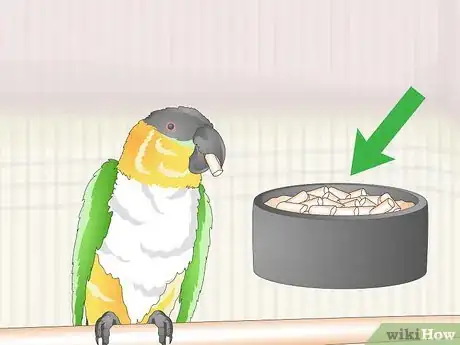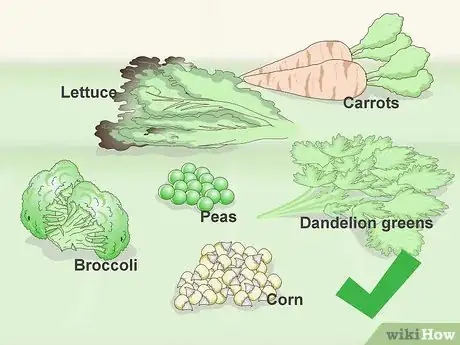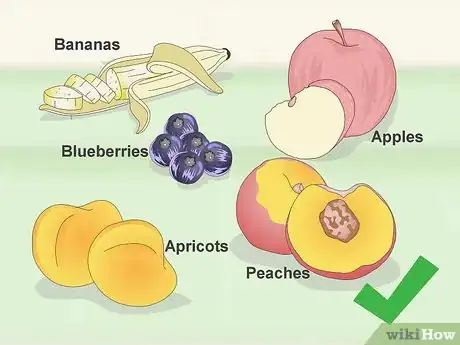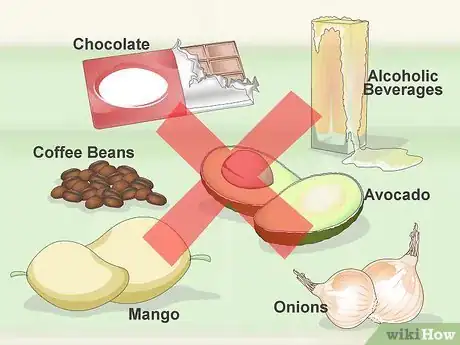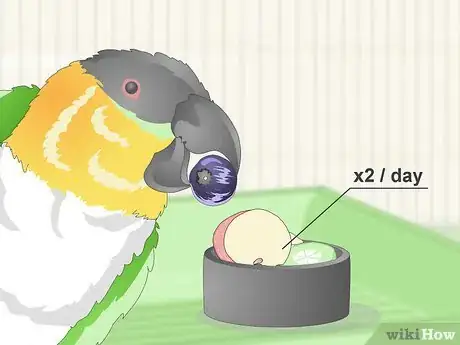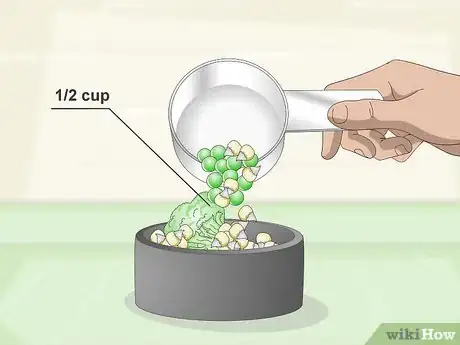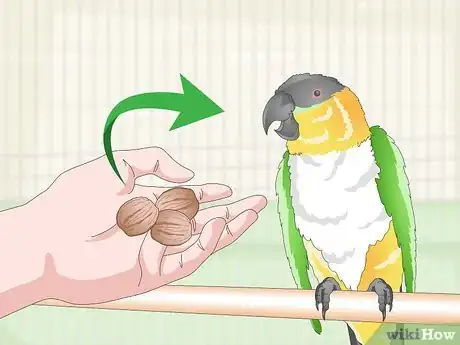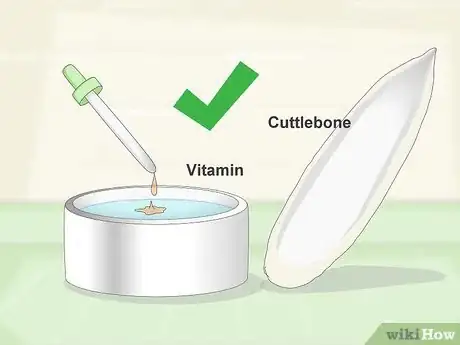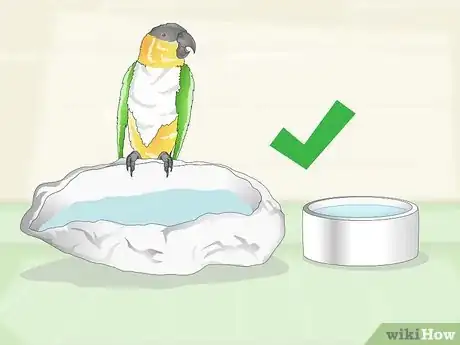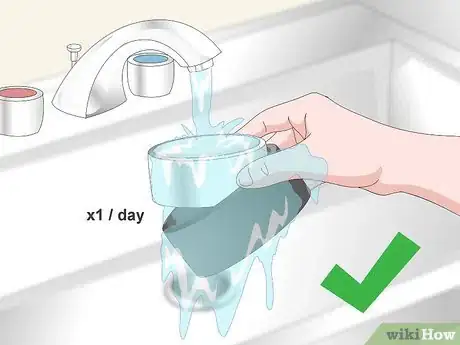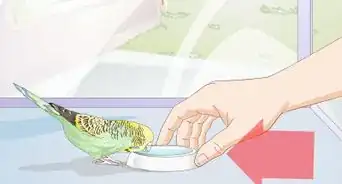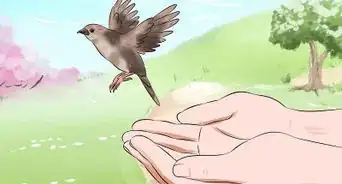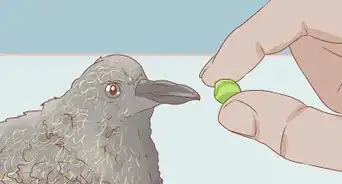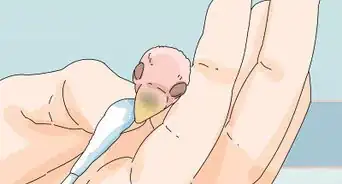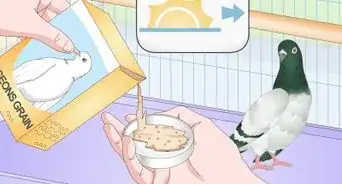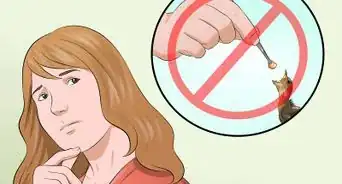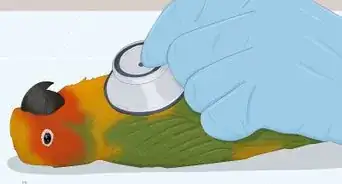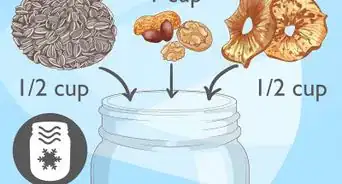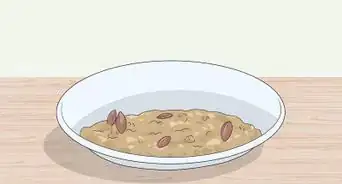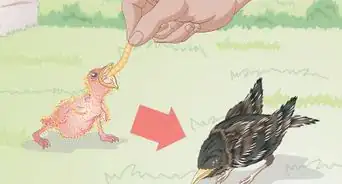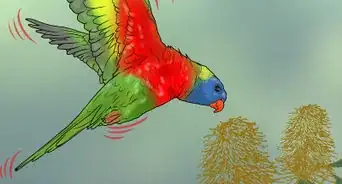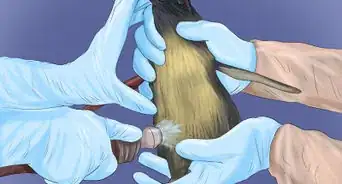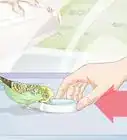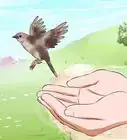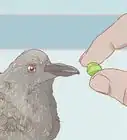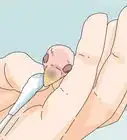This article was co-authored by Pippa Elliott, MRCVS. Dr. Elliott, BVMS, MRCVS is a veterinarian with over 30 years of experience in veterinary surgery and companion animal practice. She graduated from the University of Glasgow in 1987 with a degree in veterinary medicine and surgery. She has worked at the same animal clinic in her hometown for over 20 years.
This article has been viewed 25,545 times.
Caique parrots (pronounced “kai-eke”) are playful birds who make excellent pets. Additionally, they are pretty easy to feed. You can provide your bird with a balanced diet by offering a mix of bird pellets, veggies, and fruit. You’ll also want to offer occasional treats, provide fresh water, and provide calcium supplements.
Steps
Providing a Balanced Diet
-
1Provide high-quality organic pellets. The base of your caique’s diet should be specially formulated bird pellets. Look for a product made specifically for parrots, or use a cockatiel blend. Try to find pellets that don't have artificial flavorings, colorings, or preservatives in them. Follow the instructions on the product you choose, and provide one serving of pellets to your bird each day, generally in the morning.[1]
- Uneaten pellets do not need to be removed from the cage, but if your parrot is consistently leaving leftovers you may scale back serving sizes.
- Bird seed is another option; however, pellets provide a more complete dietary base. If you would rather use bird seed as a base, be sure to provide lots of fruit, veggies, and calcium supplements. Consult your vet to outline a specific seed-based diet.
-
2Offer fresh veggies. Although bird pellets will provide an excellent base for your bird’s diet, they will not provide all of the phytonutrients your bird needs. Offer a serving of fresh veggies each day (usually in the morning). Use organic produce whenever possible. Remove any uneaten produce after 24 hours.[2] Some veggie options include:
- Peas
- Dandelion greens
- Corn
- Beet greens
- Carrots
- Broccoli
- Lettuce
- Spinach
- Sweet potatoes
Advertisement -
3Feed your caique fresh fruit. Just like veggies, fruit can add necessary vitamins and phytonutrients to your caique’s diet. Offer a serving of fresh fruit each day (usually in the afternoon). Make sure you take the pits out from the fruit before you feed your caique. Purchase organic fruit (whenever possible), and remove any uneaten fruit after 24 hours.[3] Some good choices include:
- Apples
- Peaches
- Apricots
- Bananas
- Blueberries
- Pears
- Plums
-
4Avoid toxic foods. There are a number of foods that may upset your parrot’s digestive system, and some of these can even be poisonous. If you are not sure about a particular food, ask your vet before offering it to your caique.[4] Some foods to avoid include:
- Avocado
- Coffee beans
- Alcoholic beverages
- Alliums (such as onions, garlic, leeks, shallots, and chives)
- Chocolate
- Grapefruit
- Mango
-
5Feed your parrot twice a day. In the wild, parrots will search for their first meal at daybreak, and their second meal in the late afternoon. To work with your parrot's natural rhythm, follow a two-meal-per-day pattern. Offer your parrot food in the morning, and again in the late afternoon.
- Choose the best feeding times that work for your schedule, and then try to be consistent.
-
6Experiment with food quantities. Unfortunately, there are no hard and fast rules about how much you feed your caique parrot at each meal. This will vary based on the size, activity-level, and appetite of your bird. Start by offering 1/2 cup (118 ml) of produce at each feeding. If your bird is leaving leftover food behind, gradually scale back the amount you serve them. If your parrot is quickly consuming everything you provide, you might try offering a bit more.
- At the morning feeding, you should also offer a serving of bird pellets (follow serving instructions on your product of choice).
- Keep an eye on your parrot's weight. If they are noticeably gaining or losing, you may want to adjust their serving sizes.
Offering Treats, Water, and Supplements
-
1Give your caique walnuts as a treat. Caique parrots are very fond of walnuts. Although these high-fat nuts should not be given on a daily basis, they are an excellent option for an occasional treat. Walnuts can be used very effectively as a treat during training.[5]
-
2Supplement your caique’s diet with extra calcium. Caique parrot’s can benefit from a little extra calcium in their diet. You might ask your vet if they think supplementing calcium is a good idea for your bird.[6] Some supplemental calcium options include:
- Vitamin drops added to water.
- Cuttlebone, a calcium block, gravel with oyster shell added to the cage for your bird to nibble on.
-
3Provide fresh water. Your parrot will need to drink fresh water daily. You can offer water in a small dish, or use a fountain-style water dispenser. Refill the container each day.[7]
- Caique parrots enjoy bathing in water. It is a good idea to provide a large (large enough for your bird to climb in, but shallow) water dish for bathing.
- Provide another small dish (too small for your bird to climb in) for drinking.
-
4Wash food and water dishes daily. To help keep your caique parrot healthy, it is important to keep their cage clean and sanitary. This includes washing their food and water dishes daily. Each day, simply remove the dishes, wash them with warm water and dish soap, and return them to the cage.
References
- ↑ http://animal-world.com/encyclo/birds/Caiques/CaiquesProfile.htm
- ↑ http://animal-world.com/encyclo/birds/Caiques/CaiquesProfile.htm
- ↑ http://animal-world.com/encyclo/birds/Caiques/CaiquesProfile.htm
- ↑ http://caiquesite.com/foods/dangerous_human_foods.htm
- ↑ http://animal-world.com/encyclo/birds/Caiques/CaiquesProfile.htm
- ↑ http://animal-world.com/encyclo/birds/Caiques/CaiquesProfile.htm
- ↑ http://animal-world.com/encyclo/birds/Caiques/CaiquesProfile.htm
About This Article
To properly feed a caique parrot, make sure you're giving it high-quality organic bird pellets made specifically for parrots or cockatiels. You should also supplement your parrot's diet with fresh veggies and fruits, such as peas, corn, and apples, which will provide more of the phytonutrients that your bird needs. Avoid feeding your parrot foods that could upset its stomach or poison it, like mangoes, onions, avocadoes, and coffee beans. In terms of quantity, feed your parrot twice daily and start with half a cup of produce to see how your bird responds to it before giving it more. For more tips from our Veterinary co-author, including how to add extra calcium to your caique parrot's diet, read on!
